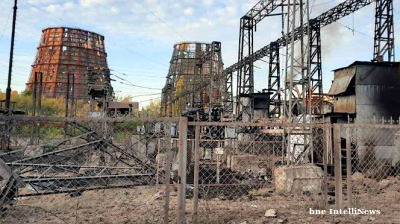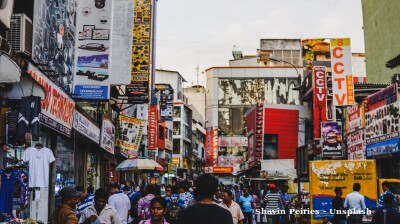The war between the population of Belarus and entrenched President Alexander Lukashenko took a new turn on September 8 as the journalists' big guns were brought up to the front in the disinformation war that is gathering momentum.
“Hello Minsk! Where does one get breakfast here?” tweeted the head of RT Margarita Simonyan as she arrived in the Belarusian capital early in the morning before meeting with Belarus' self-appointed President Alexander Lukashenko.
Simonyan has already come out strongly against the opposition, slurring Tikhanovskaya as having an IQ of 82, “not much more than an orang-utan,” she said on a recent Russian chat show.
After initially doing the Belarusian protest story pretty straight, more recently RT has retreated to its standard tactic of countering embarrassing stories by vigorously muddying the waters.
The idea to go to Minsk appears to be at Simonyan’s own initiative. No one at the station appears aware of the decision to interview Lukashenko, according to bne IntelliNews sources at RT. “She has an audience of one,” one journalist at the station told bne IntelliNews who learnt that Simonyan was in Minsk from the wires.
At the same time as Simonyan was looking for something to eat, Belarusian authorities were breaking down the door of the editor-in-chief of TUT.by, Galina Ulasik, a leading independent news outlet that has been reporting extensively on the protests and the government’s crackdown.
"As Galina told her colleagues, in the morning someone was persistently knocking and ringing the doorbell, but since she was not expecting anyone, the door did not open. The neighbours told her that they saw three men in balaclavas at the entrance. Half an hour later, the doorbell began to ring again," TUT.by reported.
Ulasik got a message to the news outlet staff saying the officers had a search warrant in connection with a criminal case they were investigating. Ulasik and her daughter Valeriya, also a journalist, were both detained and driven way by officers in plainclothes and have since been unreachable by phone.
Later reports say that Valeriya has been arrested and charged with participating in the protests, an administrative crime, as well as organising a riot, a more serious criminal charge that carries a lengthy prison sentence.
The state has regularly targeted the children of opposition leaders, threatening to take custody of young children under a “dysfunctional family” law passed a few years ago. Both opposition leader Svetlana Tikhanovskaya and her colleague Veronika Tsepkalo have small children and were threatened with losing them to state custody, which was part of the reason both women left the country.
“Valeriya participated in the protest action of journalists but also another peaceful protest. She is charged both with participation in unlawful gathering (Admin code) and mass riots (Criminal code),” tweeted Maryia Sadouskaya-Komlach, a journalist with Free Press Unlimited.

Independent journalist Valeriya Ulasik and daughter of the editor of leading independent publication TUT.by was arrested and has been charged with organising mass riots
Throughout the protests the OMON have been specifically targeting journalists who have been beaten, arrested and had their equipment smashed or confiscated despite clearly wearing official press accreditation badges and declaring themselves as such to the police. There are reports that there is even a special unit that is dedicated to arresting journalists in an attempt to intimidate them.
The leading newspapers have also largely been put out of action after all the printing presses in Minsk mysteriously “broke” after they began printing embarrassing front pages during the protests’ high point. Even when the papers tried to print in Moscow and ship the issues to Minsk, they were not allowed to cross the border.
RT spin
RT has become progressively more involved in the Belarusian story. In the first week of the protests following the rigged presidential election on August 9 the Kremlin was noticeably quiet as it watched events unfold. The Russian press followed the story closely and did the story remarkably straight, with most newspapers condemning Lukashenko, saying he should leave.
However, everything changed after Russian President Vladimir Putin's statement that he was willing to send a special military unit to quell the protests “if necessary” on August 27.
With the explicit backing of the Kremlin Lukashenko was able to shore up his position and start to push back. The first thing he did was to retake control of the national broadcaster, which had gone off air after the entire staff went on strike.
Lukashenko admitted that Russia flew in a team of journalists from RT to take control of the broadcaster and it started pumping out pro-government propaganda and disinformation. But the move backfired and caused hilarity amongst the local press corps due to some very amateur blunders made by the Russian crew.
The captions run under images on the news referred to “Byelorussia” in Cyrillic, a term used exclusively by Russians, whereas the locals, even Russian speakers, call their country “Belarus” which is from the Belarusian language.
Although only a minority of Belarusians speak their own language on a daily basis – even presidential election candidate Svetlana Tikhanovskaya admits that she speaks bad Belarusian – the Belarusian language version of the name of the country has been universally adopted by all the locals.
The Russian press is now the only large foreign press corps left on the ground. The Western international correspondents that could get into the country have now mostly left after the initial showdown with the OMON riot police faded away in a temporary truce at the end of the first week.
Then the entire foreign press corps, including Belarusian nationals working for international outlets like RFE/RL, had their accreditation pulled on August 29, making it illegal for them to report on the story.
But not RT. Their camera crews remain on Independence Square and their story has become increasingly distorted. During the first Sunday mass rally the RT reporter tried to play the event down, saying only 20,000 people turned up, while standing in the midst of a crowd that was at least 100,000 strong and filled the whole of Independence Square.
RT has been spinning the story as “Country Divided” and in a facsimile of balanced reporting giving equal airtime to the “pro-government story.” The RT coverage includes footage of pro-government rallies and interviews with angry babushkas extolling Lukashenko’s virtues.
In another failed attempt at spin, RT ran a story about how the families of OMON officers were in danger and were receiving death threats as part of the public backlash to their brutal attempts to suppress the protests, in an attempt to humanise the black-clad officers.
Where the spin comes in is with the questions it tries to raise over key facts like the crowd size and what it fails to report. The pro-government rallies RT has covered are a few thousand at best and the participants are paid to be there, factory workers who are told to attend under threat of losing their jobs, or simply soldiers ordered to join in wearing civilian clothes.
There is a mass of supporting evidence to these claims on social media, but the RT reporters do not even raise the question. For example, there have been posts on social media of soldiers returning to their barracks after a pro-government rally, still carrying the green and red pro-government national flag and posters denouncing the opposition.
Russia is clearly involved in a large and well-organised disinformation campaign with RT’s help. In another incident Lukashenko got out of his car and happened to run into a small crowd of babushka supporters with whom he stopped to chat, reassuring them that everything would be ok – all on camera.
In the most hilarious episode of disinformation Lukashenko tried to help the Kremlin out with the flak it was getting over the latest poisoning story. Lukashenko told Prime Minister Mikhail Mishustin during his visit to Minsk last week that the Belarusian had intercepted a secret conversation between “Nick” in Berlin and “Mike” in Warsaw that “proved” the poisoning of anti-corruption blogger and opposition activist Alexei Navalny with Novichok was a hoax.
Here is the transcript:
Warsaw: Hello! Good afternoon, Nick. How are we doing?
Berlin: Everything seems to be [going] according to plan...the materials on Navalny are ready. They will be forwarded to the Chancellor's office. We’re awaiting her statement.
Warsaw: Is the poisoning definitely confirmed?
Berlin: Listen, Mike, in this case that’s not so important...There’s a war going on...And during war all methods are good.
Warsaw: I agree, we need to discourage Putin from poking his nose into Belarus’ affairs...The most effective way is to drown him in Russia’s problems, and there are many of them! Moreover, they’ll have elections in the near future, voting day in Russia’s regions.
Berlin: How are things in Belarus in general?
Warsaw: To be honest, not so good. President Lukashenko turned out to be a tough nut to crack. They’re professional and organised. It’s clear that Russia supports them. The officials and the military are loyal to the president. [We’ll discuss] the rest during the meeting, not by phone.
Berlin: Yes, yes, I understand, then I’ll see you later, bye.
Warsaw: Bye.
Mishustin sat through Lukashenko’s briefing with a totally impassive face and didn't react to the “good news.” Berlin and Warsaw both called the report “fake.”
Despite the Lukashenko regime's effort to stymie the work of the independent journalists, prevent newspaper from being printed and shut down their online sites, it has lost control of the information space.
News is relayed in real time by the various social media sites that continue to operate on the Telegram messaging app that also defied the Russian Federal Security Service (FSB) attempts to block it for two years before finally giving up.
All the press have channels on Telegram, with the Nexta channel pre-eminent. Nexta had 2bn views last month, making it one of the most watched news channels in the world. The protesters have embraced their local journalists who are regularly applauded by the crowds for their work in the face of repression. The news is readily available and increasingly local communities are atomising the protest into small groups co-ordinated on Telegram that make it increasingly impossible for the government to prevent or control them. In Belarus the app has become more powerful than the baton.
Features

Ambition, access and acceleration – Uzbekistan’s Startup Garage opens free academy for entrepreneurship
Aim is to train 50,000 young founders by 2030.

Ukraine’s growing energy crisis promises a cold and dark winter
Since the summer, Kyiv has changed tactics. Given the almost complete failure of Western oil sanctions to curb Russian oil exports, it has been targeting Russian oil refineries. The Kremlin has struck back, targeting Ukraine's power system.

Russia, China sign off on Northern Route shipping deal to slash global freight times
Russia and China have signed a landmark agreement to develop and commercialise the Northern Sea Route (NSR), after Beijing tested the route last month, that could slash Europe-Asia cargo transit times and challenge the primacy of the Suez Canal.

Sri Lanka’s economic escape
Sri Lanka’s recovery over the past year reads like a narrow escape rendered into a cautious, albeit unfinished success story.




